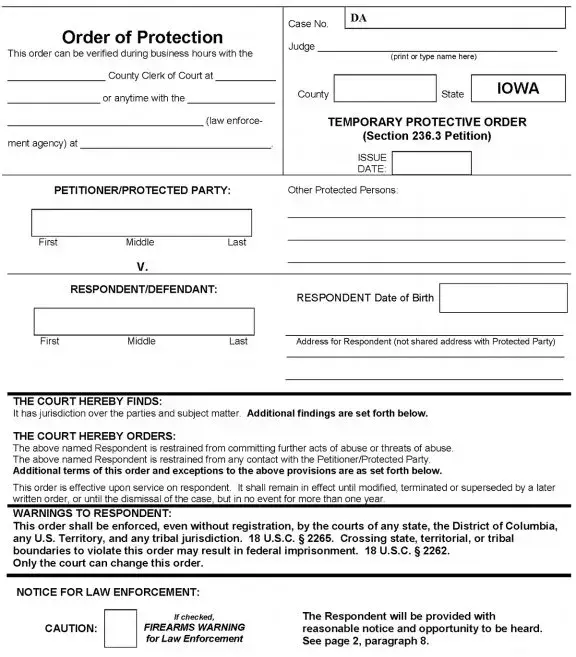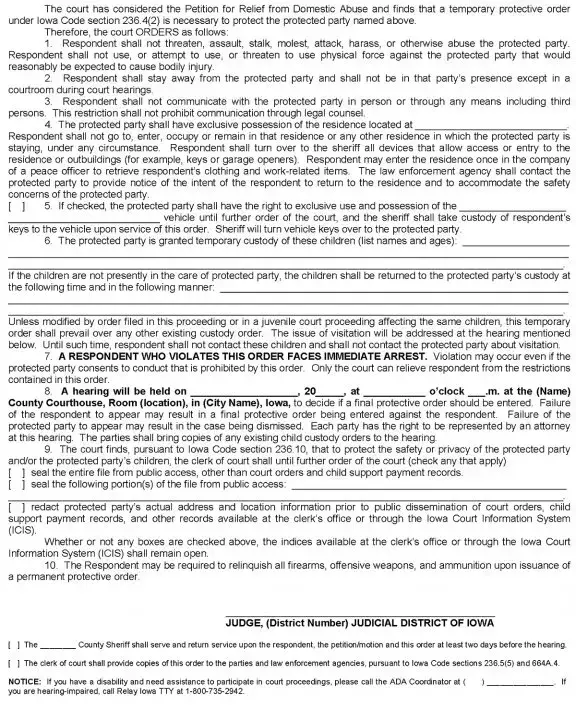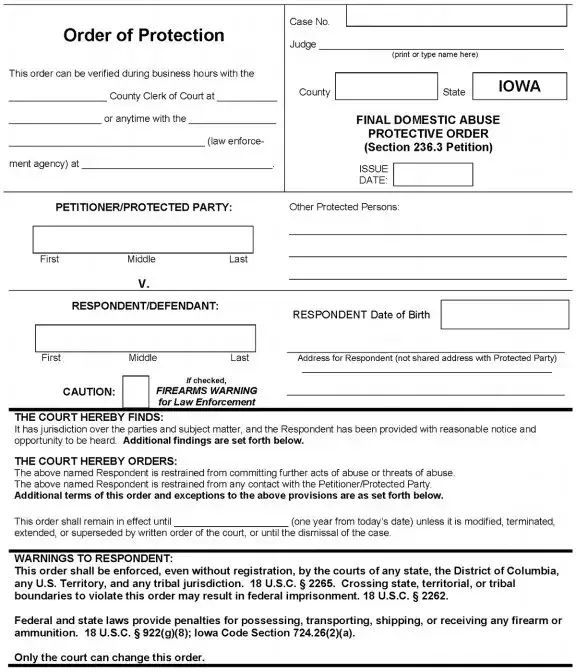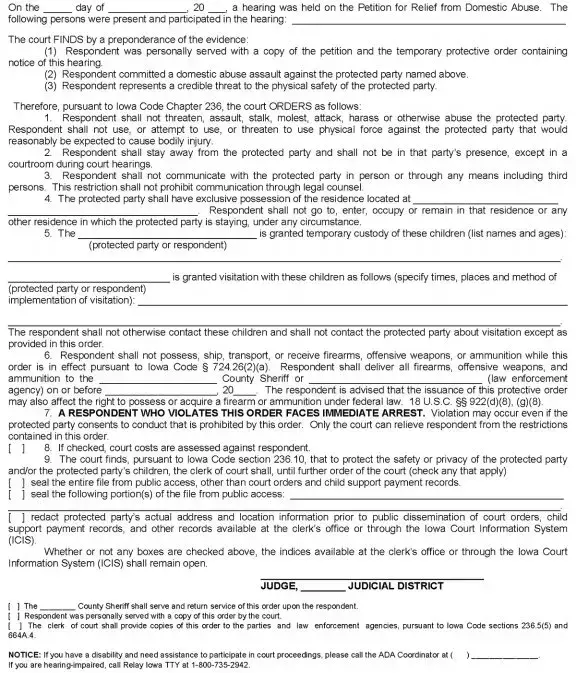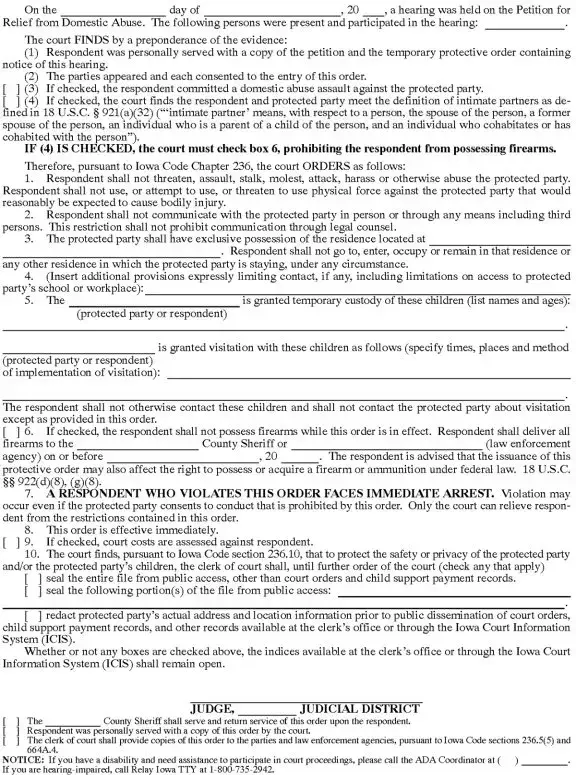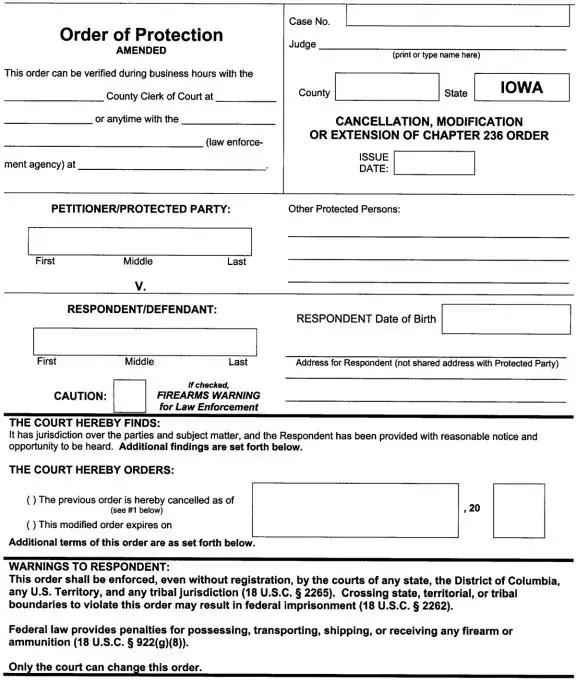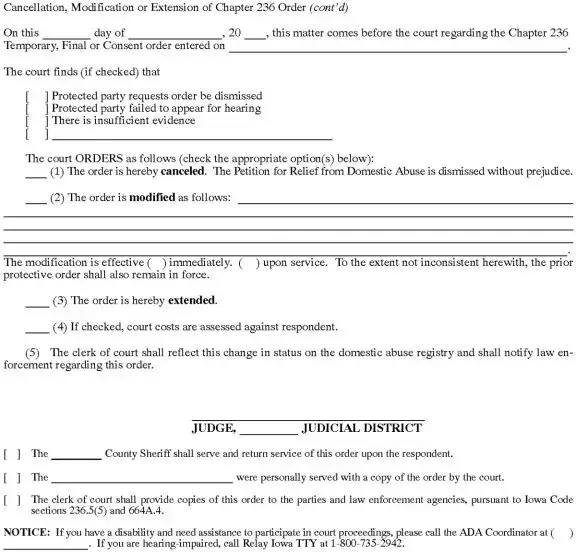The Temporary Protective Order (Section 236.3 Petition) is similar to the Temporary Protective Order (Ex Parte) (Iowa Code Chapter 598) in that both serve to provide immediate protection to individuals facing threats or abuse. The ex parte version, however, allows for a temporary order to be issued without the presence of the abuser, making it a quicker option for those in urgent situations. Both documents aim to prevent further harm while the legal process unfolds, ensuring the safety of the petitioner.
Another document, the Protective Order Following Adjudication of Domestic Abuse (Section 236.3 Petition), parallels the Domestic Abuse Protective Order Accompanying Dissolution Decree (Iowa Code Chapter 598). Both types of orders are issued after a legal determination of domestic abuse. They establish protective measures to safeguard the victim, often including restrictions on contact and behavior by the abuser. This ensures ongoing protection even after a court has made a ruling on the abuse.
The Protective Order by Consent Agreement (Section 236.3 Petition) is similar to the Domestic Abuse Protective Order by Consent Agreement Accompanying Dissolution Decree (Iowa Code Chapter 598). Both documents are created when the parties agree to certain terms of protection without a full court hearing. This mutual agreement can help facilitate a smoother resolution while still providing necessary safeguards for the victim. Consent orders are often less contentious and can lead to a more amicable outcome.
The Cancellation, Modification, or Extension of Chapter 236 Order shares similarities with the Cancellation, Modification, or Extension of Chapter 598 Order. Both documents allow for adjustments to existing protective orders. Whether a victim feels safer and no longer needs the order, or if circumstances change and more protection is needed, these forms provide a legal way to modify or terminate the orders as necessary.
The No Contact Order (Criminal Prosecution of Domestic Abuse Assault § 708.2A) is akin to the No Contact Order related to Harassment, Stalking, or Sexual Abuse (various sections). Both types of orders prohibit the accused from contacting the victim, ensuring their safety during criminal proceedings. The primary difference lies in the specific nature of the offenses leading to the issuance of these orders, but their intent remains the same: to protect the victim from further harm.
For individuals interested in purchasing or selling, the comprehensive ATV Bill of Sale document plays a crucial role in the transaction process. This form not only formalizes the agreement between parties but also protects the rights and responsibilities of both the seller and the buyer within the state of Colorado.
Modification, Extension, or Cancellation of No Contact Orders (Criminal Prosecution of Domestic Abuse Assault § 708.2A) parallels the same process for No Contact Orders related to Harassment, Stalking, or Sexual Abuse. Both documents allow for changes to the existing orders based on the evolving needs of the victim or the circumstances of the case. This flexibility is crucial in ensuring that the protective measures remain relevant and effective.
The Order for Sentencing (§ 664A.5) is similar to the Modification, Extension, or Cancellation of Order for Sentencing (§ 664A.5 and § 664A.8). Both documents deal with the consequences of violating protective orders. They ensure that appropriate actions are taken against individuals who do not comply with the established restrictions. The focus is on enforcing the law to protect victims and maintain order within the legal system.
Finally, the Additional Protective Order Under Section 664A.7 and Order Setting Contempt Hearing provides an extra layer of protection similar to the other protective orders. This document is used when there is a need for further legal action against someone who has violated a protective order. It emphasizes accountability and reinforces the legal protections already in place for victims, ensuring that their safety remains a priority.

